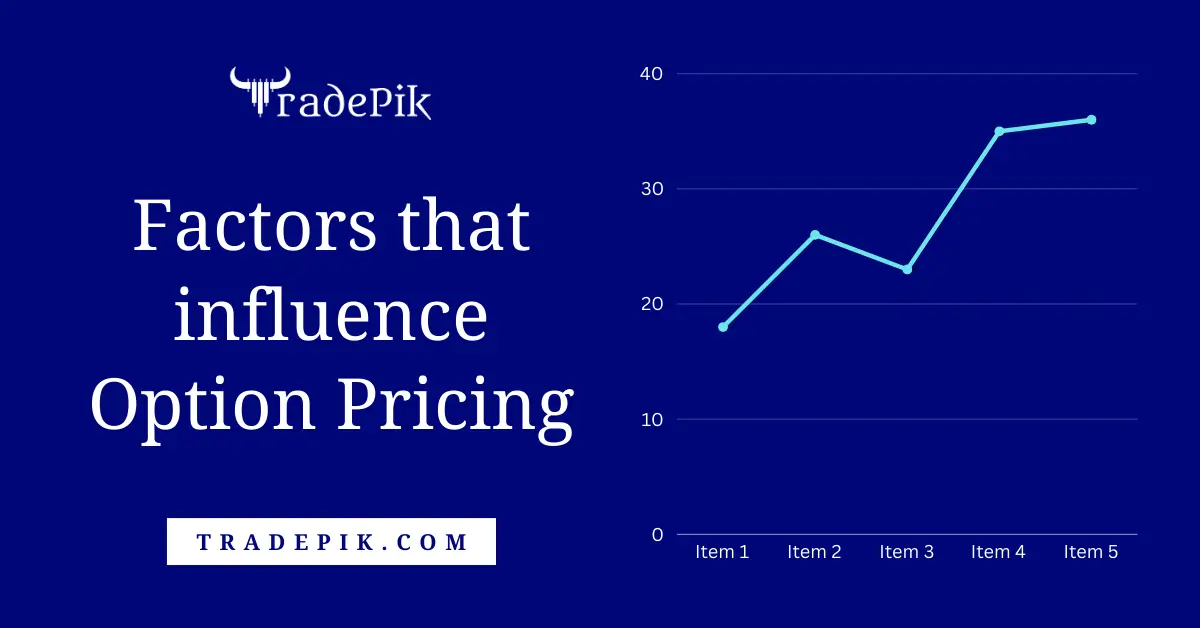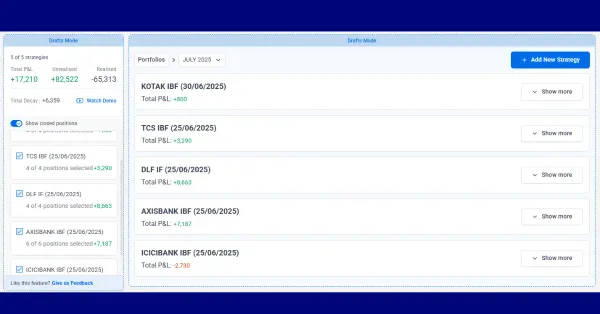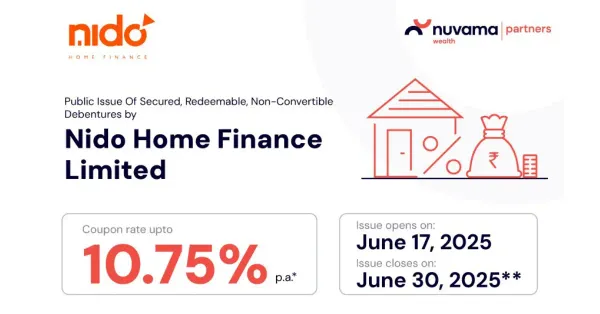Understanding Option Pricing: The Factors at Play
Master option pricing with this guide! Uncover the key factors influencing option pricing, including underlying asset price, volatility, time decay, interest rates, etc. Demystify option valuation and make informed trading decisions.

Have you ever wondered what drives the price of options in the stock market? Like many aspects of investing, option pricing can seem like a complex maze of data and variables at first. But don’t worry, we're here to guide you through this maze and break down the factors that influence the pricing of options. Whether you’re a beginner looking to dip your toes into the world of options trading or an experienced trader aiming to brush up on fundamentals, this article will provide you with the key factors you need to consider.
- Understanding what options are and how they work
- Familiarizing yourself with the key factors that determine the price of an option
- Learning about the role market conditions play in option pricing
“Option trading is all about understanding the intricacies of the market and making informed decisions. Gaining an understanding of option pricing is a crucial first step."
Decoding the Basics: What are Options?
Options are, at their most fundamental level, a type of financial derivative - financial instruments that derive their value from an underlying asset or group of assets. These assets could be anything from stock shares and commodities to currencies or indexes. Traders use options as a strategic tool, providing them a variety of ways to generate a profit or guard against potential losses.
To be more specific, buying an option provides you with the right, but not the obligation, to make a transaction involving the underlying asset. There are two types of options you can purchase: calls and puts. If you buy a call option, you’re securing the right to purchase an asset at a fixed price within a specific time frame. Alternatively, a put option grants you the right to sell an asset under the same conditions.
Each option contract has a pre-decided expiration date - the day on which the option contract becomes void. Therefore, traders must make their decision - whether to exercise their right to buy or sell or to let the option contract expire worthless - by this date. In simpler terms, the goal of trading options is to predict price trends accurately, and benefit from them before the expiration date.
While trading options can be profitable, it's also a complex process requiring a thorough understanding of how options are priced. Understanding these factors can help you predict how the price will change over time, empowering you make more informed trading decisions.
Demystifying Option Pricing: A Beginner's Guide
Firstly, it's crucial to recognize that an option's price, also known as its premium, is fundamentally impacted by two key components: intrinsic value and time value. Understanding the factors that influence these two components will provide a solid foundation for your options trading journey.
The intrinsic value of an option is the difference between the current price of the underlying asset and the strike price of the option - however, this value is never negative. If the strike price of a call option is below the current asset's price, the option has an intrinsic value. Conversely, a put option has intrinsic value if the underlying asset's price is below the strike price. If the difference is not in favor of the option holder, the intrinsic value is zero.
The second part of an option's price, the time value, represents the probability that the option might become profitable before its expiration. Generally, the longer the time until expiration, the higher the time value, as there's a greater chance the option could move into the money.
The Binomial Pricing Model: A Closer Look
An important model for option pricing is the binomial pricing model. This model offers a unique take on options pricing by using a decision-tree approach. By creating a multitude of potential future outcomes, it provides insights into whether an option contract is likely to be profitable or not. This tends to be particularly helpful for American-style options, where early exercise decisions can play a big role.
At its core, the binomial model evaluates options by iterating through each possible path the price of the underlying asset might take, starting from the present day until the option's expiration date. For each possible ending price, the value of the option is calculated. These values are then averaged and discounted to today to find the option's present value.
With this working knowledge of how intrinsic value, time value, and the binomial pricing model impact option pricing, you'll be better equipped to navigate the complex and exciting world of options trading.
Unveiling the Black-Scholes Model: The Standard in Option Pricing
With roots tracing back to economists Fisher Black and Myron Scholes, the Black-Scholes model has carved a niche for itself as a standard for option pricing. But what makes this model a favorite tool among financial practitioners?
The Black-Scholes model is a theoretical framework that pinpoints numerous factors that impact an option's price. These include the current stock price, the option's strike price, the risk-free interest rate, the time until expiration, and the security's volatility. By integrating these variables, the model can generate an estimated price for European options.
Notably, this model incorporates constant price variation, the time value of money, the option's strike price, and time to expiry. One of the distinctive approaches of this model is the use of the Black-Scholes call option formula. This formula multiplies the stock price by the cumulative standard normal probability distribution and then subtracts the net present value of the strike price multiplied by the cumulative standard normal distribution.
One of the resounding benefits of utilizing the Black-Scholes model is its ability to streamline the pricing process. By providing a feasible framework to predict the pricing of options and other financial products, Black-Scholes can be a guiding star to those navigating the labyrinth of options trading.
Though, like all models, the Black-Scholes isn't without its drawbacks. It tends to make assumptions that don't always reflect the realities of the market, such as fixed interest rates and predictable stock prices. Nevertheless, when used appropriately and contrasted against other models like the binominal model or even a Monte Carlo simulation, it can offer valuable insights.
So, as you venture forward in the world of options trading, allowing the Black-Scholes model to illuminate your path can contribute to more informed and potentially profitable decision making.
Factor in Play: How Volatility Impacts Option Pricing
Before diving into the depths of how volatility plays a role in influencing your option pricing strategies, it's critical that we fully grasp the concept. Simply put, volatility refers to the price fluctuations of a stock over a specific period. This fluctuation can swing either way, offering the possibility of significant returns, but also presenting the risk of substantial losses. In the realm of options trading, the greater the volatility, the higher the chances for the option to be profitable or 'in-the-money' by expiry; as such, this directly results in a higher time value.
Volatility isn't a stagnant figure; it's a dynamic metric that changes in tandem with market conditions and investor sentiment. It is commonly measured in two forms: historical volatility and implied volatility. Historical volatility outlines the stock's past price swings, while implied volatility reveals the market's prediction of a stock's future volatility. And it's this implied volatility, a crucial variable often reflected in the option prices, that helps you, as a trader, to assess the upcoming volatility of both the option and the stock.
So, how exactly does volatility impact option pricing? Let's take a moment to understand the correlation. An option's time value is heavily reliant on the volatility the market anticipates the stock will exhibit up until expiration. Stocks with considerable volatility typically have a higher time value because of the increased probability of significant price movements within the time frame. It is, essentially, a measure of risk - the higher the volatility, the higher the risk, the higher the potential reward, and hence the higher the option price.
It's paramount to factor in the implications of volatility when devising your trading strategies. Understanding the relationship between volatility and option pricing can empower you to make informed predictions, harness better trading opportunities, and ultimately navigate the uncertainties of the market more confidently.
Diving Deeper into Time Decay: Understanding Theta
When you're trading options, time is of the essence. Theta, a crucial gauge in the options universe, encapsulates the rate of decline in the value of an options contract as it nears expiration. This phenomenon is also known as time value decay or simply 'time decay'. What makes time decay peculiar is its non-linear nature. Just imagine you're racing against a clock that's running faster with every passing second.
The impact of this time decay intensifies as the option contract approaches its expiration. Essentially, the more time left until expiration, the sluggish the rate of time decay. However, as the expiration date looms, the pace of time decay accelerates. It's like a ticking bomb, with the TikTok getting louder as the expiry date gets closer.
This property of time decay gives rise to the 'Theta decay curve', a critical tool traders use to visualize how an option's remaining term impacts its time value. Looking at the curve, you'll notice that it steepens as the expiration date draws nearer, reflecting the accelerating pace of time decay.
Theta and the Five Option Greeks: A Connection
Theta is just one of the five main Option Greeks, namely Delta, Gamma, Theta, Vega, and Rho. Each of these signifies a different dimension in option pricing involving different factors. Notably, Delta can also serve as an approximation of the likelihood that an option will end in-the-money.
'In the money' means that the option possesses intrinsic value, a factor vital to option pricing. It correlates whether the strike price of an option – the preset price at which an option can be exercised – is favorable compared to the current market price of the underlying asset. But, let's not lose sight of our primary focus here - Theta and time decay.
Longer-dated Options: The Impact of Changing Interest Rates
While focusing on Theta and time decay, it's important to consider longer-dated options, known as Long-Term Equity Anticipation Securities (LEAPS). Why LEAPS? Well, longer-dated options mean longer periods until expiry, which means slower time decay rates. But it also means a higher susceptibility to the impacts of changing interest rates over the course of the contract's duration. This is where Rho, another Greek, plays a role, representing the impact of interest rates on option contracts. Yes, options trading is as engaging as Greek mythology, with its own set of deities dictating the financial outcomes!
Thus, wrapping up, time value decay, Theta, is an important aspect of options trading. Mastering it, along with understanding the interplay of various factors such as time to expiry and changing interest rates, holds the key to making informed trading decisions. Stay tuned as we dive deeper into the fascinating world of options in the forthcoming sections!
Market Conditions and Their Influence on Option Pricing
Just as in the open sea, where changing winds and currents can greatly affect a ship's course, market conditions can significantly influence the pricing of options in the financial markets. It's critical to comprehend that option prices are not set in a vacuum. They are intrinsically linked to various market forces and the overall trading environment.
A typical example is market expectation of a stock's future volatility. This is a key determinant of the value attached to an option. If a stock is expected to be volatile in the future, this could be an indication of larger price swings. Hence, the higher the expected volatility, the higher the option's premium because the potential for profit increases. This potential is priced into the premium of the option, and thus the options contract becomes more valuable.
Another vital market factor is the general direction of financial markets. In periods of bullish market sentiment, call options tend to be more expensive, as investors expect stocks to rise, making these contracts more attractive. Conversely, in bearish market conditions, put options are likely to be pricier.
Role of Implied Volatility in Options Pricing
Implied volatility reflects traders' sentiments about the future volatility of the option and the underlying stock. Traders use this measure to essentially estimate future outputs based on current option prices. Evidence of this can be seen in exaggerated options prices leading up to uncertain events, like earnings announcements or product launches. It serves as a measure of how much movement the market expects in a stock.
Understanding and being able to navigate the impact of market conditions on option pricing can significantly enhance your trading strategy. Valuable insights can be gained from being attuned to market sentiment, and adjusting your investment strategy accordingly. In the end, it's not just about knowing the factors that influence option pricing. It's about adapting to these factors and making astute trading decisions amidst the changing currents of the financial markets.
| Option | Stock Volatility | Time Value | Option Price |
|---|---|---|---|
| Option A | High | High | High |
| Option B | Medium | Medium | Medium |
| Option C | Low | Low | Low |
How Supply and Demand Affect Option Prices
Just like any other financial market, the options market isn’t immune to the fundamental economic principles of supply and demand. The interplay between these two forces plays a crucial role in determining the price of options.
Here's how it works: when the demand for a specific option increases, its price generally rises. Conversely, if the supply of a particular option increases, the price tends to decrease. However, it's important to remember that other factors, such as the underlying stock's price and volatility, can also significantly impact an option's price.
The presence of many buyers and sellers in the market results in fluidity and competition, both of which help in price discovery. This idea of crowd wisdom, where market participants through their collective actions, help in determining the 'fair' price of an option can work in favor of informed traders, especially those who can discern patterns and trends in the options market.
Moreover, market sentiment can also heavily influence supply and demand. During times of market optimism, demand for call options may spike, leading to higher option prices, while periods of market pessimism may result in increased demand for put options. Consequently, tracking market sentiment can provide key insights into potential swing in option prices.
In conclusion, understanding the interplay between supply and demand should be a key component of your options trading strategy. By recognizing how these factors affect option prices, you can take better trading decisions based on information that's literally at your fingertips.
Practical Tips: Making Informed Trading Decisions
Spotting profitable options trading opportunities doesn't have to be a daunting task. With a firm understanding of how options are priced, you're already on a good footing. Here are some practical tips to help you further refine your trading decisions.
Firstly, keep an open mind about unpredictable market conditions. Always be prepared that the market may not react as you anticipate. Market variations can cause option prices to behave in a way contrary to what the standard pricing models may suggest. Remember, options trading, much like any type of trading, has inherent risks. It's important to always trade responsibly.
Secondly, consider utilizing implied volatility as a guiding tool. Volatility, as addressed in the earlier sections, plays a significant role in determining option prices. A higher level of implied volatility usually indicates higher option prices. Keep in mind that while volatility offers potential for substantial returns, the risk is considerable.
An important aspect to consider is the expiration date of the options. Those with longer durations are usually more expensive, as they grant the holder more time to exercise the option before it expires. However, long-term options expose the holder to risks associated with time decay, particularly the theta component which is discussed earlier.
Lastly, be sure to stay updated with market news and events that may have an impact on your chosen assets' prices. This includes, but not limited to economic announcements, earnings releases, geopolitical events and much more. Staying informed about these developments will empower you to make well-informed trading decisions.
In conclusion, knowing the factors that influence option pricing is pivotal, yet is just part of the broader spectrum of skills and knowledge needed for successful options trading. After all, trading securities, futures products, and digital assets involve risk and may result in a loss greater than the original amount invested.
Essential Tools for Option Pricing Analysis
To empower your journey into options trading, you need to familiarize yourself with certain indispensable tools. These will aid you in understanding and applying concepts related to option pricing analysis, amplifying your potential to make informed decisions.
The Option Pricing Calculator: Your First-Line Tool
An option pricing calculator is a beginner-friendly tool that delivers critical information at a glance. By inputting key parameters such as the underlying asset's current price, the option's strike price, risk-free interest rate, time until expiration, and volatility, the calculator can provide a theoretical price for a call or put option.
This information can serve as a launchpad for your trading stratagem, as it provides a quick-eyed assessment of whether an option is overpriced or underpriced relative to its theoretical value.
Exploring Option Chains: A Guide through the Options Jungle
Option chains, provided by most trading platforms, present you with a detailed list of all available option series for a particular asset, based on its expiration date and strike price. It's an efficient way to spot trading opportunities and observe how premium prices change with varying strike prices and expiration dates.
Understanding Volatility Skew Charts: Gauging the Market's Mood
Volatility skew charts depict implied volatility across various strike prices, giving you a visual representation of market sentiment. An uptick in implied volatility often suggests increased option pricing, while a downturn could imply the converse. Grasping this chart can provide you with valuable insights into prevailing market attitudes and future price movements.
Reaping the Benefits of Option Pricing Models: The Math behind the Prices
The Black-Scholes and Binomial pricing models are backbones of option pricing strategies. While they may echo complexity, having a rudimentary understanding of their mechanisms can arm you with a significant advantage. By allowing you to assess the theoretical value of an option, these models give a profound insight into the intrinsic factors affecting an option's price.
That said, keep in mind the models are based on certain assumptions — for one, constant volatility in case of the Black-Scholes model — that aren't always applicable in real-world scenarios. Therefore, any result should be taken as an informed estimate, rather than an ironclad guarantee.
Equipped with these tools and insights, you'll be a step closer to maneuvering the intricate world of option trading with ease and confidence.
Turning Knowledge into Power: Using Option Pricing to Your Advantage
You now have a solid overview of the techniques that experts apply and the factors they consider when pricing options. But how can you use this knowledge to your advantage?
With a clearer understanding of the key ingredients that make up option prices, like the stock's current price, the option's strike price, the risk-free interest rate, time until expiration, and market volatility, you are now armed to conquer your trading path. It's like having a secret decoder ring for the sometimes mysterious world of options trading.
For instance, by using the Binomial or Black-Scholes pricing models, you can predict the theoretical value of an option contract. This is not just a handy skill, but allows for effective risk management. By knowing this theoretical value of an option, you're in a better position to make more informed trading decisions. You can manage your risk exposure to different assets, which is a crucial aspect of any sound investment strategy.
Applying thorough comprehension of the options pricing models, the effects of time decay, volatility, changing interest rates, and the overall market conditions, can help you to effectively monitor and analyze potential trading scenarios.
Remember, a change in any one of these factors could significantly impact the value of an options contract. Therefore, keen observation and a comprehensive understanding is your power tool in this trade. Comprehending the mathematical reasoning behind options pricing could even help you pinpoint arbitrage opportunities—instances where you could make practically risk-free profits.
With this newfound understanding, embarking on your options trading journey should feel less daunting and more empowering. Knowledge is power, they say. And in the volatile realm of options trading, the more knowledgeable you are about the intricacies of option pricing, the more power you have to make profitable moves.
So, take this information, keep building your understanding, make informed decisions and see how your trading strategy evolves. The great bonus is – as your understanding enriches, not only will your trading decision improve, your confidence, too, will thrive!
And guess what? The learning never stops! To propel your journey further in the world of options trading, we highly recommend you to enroll in our "Option Strategies: A Mentorship Program". It's a one-stop arena to learn, develop and refine your trading strategies with the guidance of industry veterans. So, ready to take your options trading understanding to the next level? Click here to enroll now! Let's turn your newfound knowledge into an unbeatable strategy!




